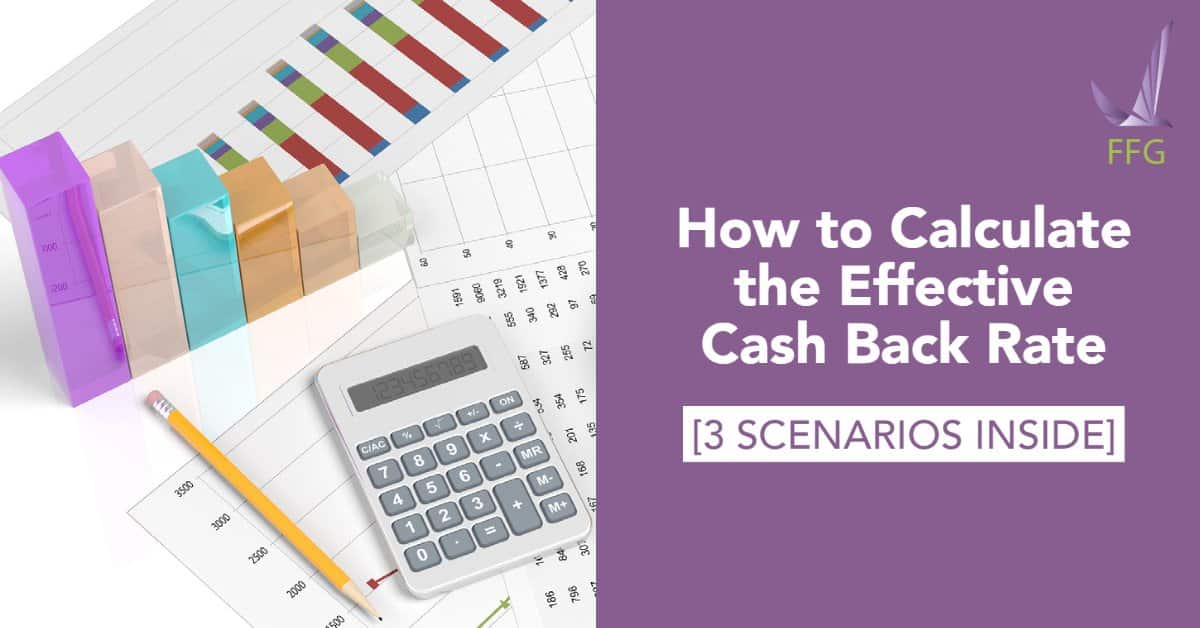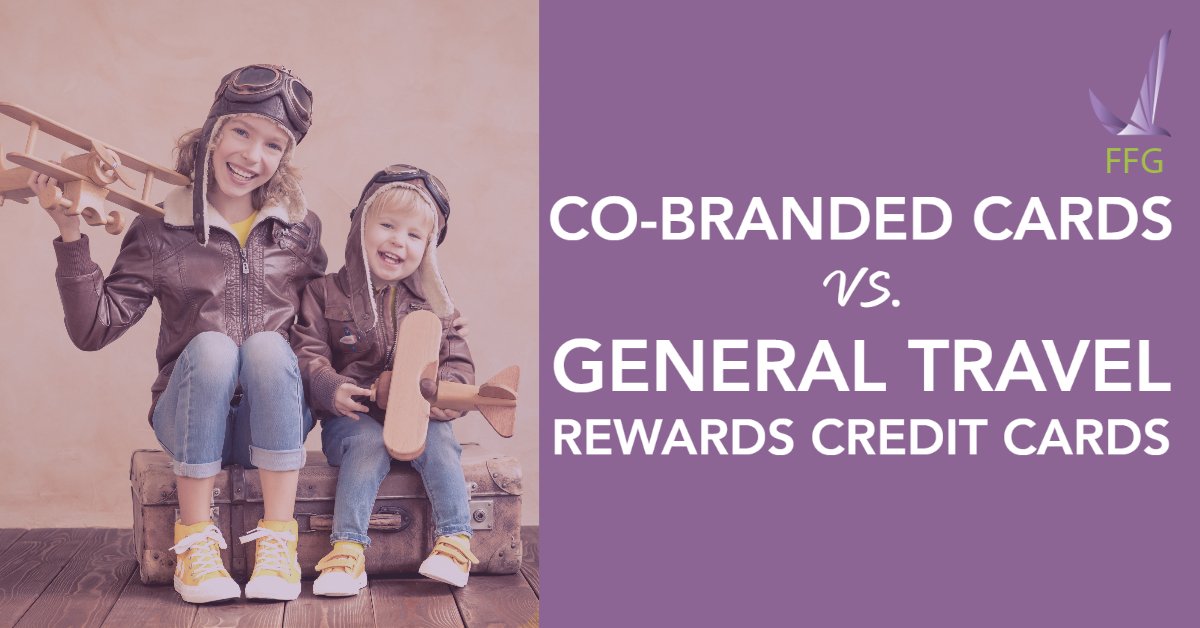How to Calculate the Effective Cash Back Rate

Last Updated: April 5, 2023
Do you know how to maximize your cash back rewards? Not all cash back offers are created equal. Today, we will dive into calculating the effective cash back rate and learn how to make the most out of your rewards program with three real-life scenarios. Let’s start by defining the term.
What is the Effective Cash Back Rate?
The effective cash back rate is a helpful measure showing how much value a credit card will give you in return for the money you spend on it. Calculating the effective rate can help you decide if a card is worth getting.
Although the effective cashback rate is essential for judging the best option for a credit card, it isn’t the only factor to consider when evaluating the worth of a rewards credit card.
If you want to win the credit card game and start using credit cards for your benefit, download our free Guide.
Table of Contents
Steps to Calculate the Effective Cash Back Rate
There are a couple of steps to determining the effective cash back rate.
- It would be best to determine the value of the credit card’s rewards before applying the annual fee. Estimate how many points you can earn and translate this into monetary terms.
- Calculate the dollar value of any bonus offers.
- The value of the rewards, points and bonus offers should be added together.
- From this total, subtract the annual fee. What remains is the net value of the card in terms of cash.
- To calculate the effective cash back rate, divide the net value by the amount you must spend.
Let’s use an example to illustrate our steps
You want to take a trip from Chicago to New York City. If you use your credit card, it will cost you 20,000 airline miles. Typically, the flight is $400. The value of each mile is then
$400/20,000 miles = $0.02 per mile.
The card you’re using lets you redeem 1 mile for each dollar that you spend. To earn the 20,000 miles you need, you would have to spend $20,000. Without taking annual fees or bonuses into account, the face value of your effective cash back would be
($400/$20,000)*100%=2%.
Now, the card may offer a sign-on bonus of 15,000 miles and an annual fee worth $100. Subtracting the bonus miles from the original amount, you now need to earn only 5,000 miles. This changes your cash back rate to
($400/$5,000)*100%=8%.
The annual fee reduces the value of the ticket by $100, from $400 to $300. Your effective cash back rate is now
($300/$5,000)*100%=6%.
The example we used is simplified and did not consider various factors that may occur in real life. Your spending pattern may be different. Your card may have a higher flat rate or offer multi-tier rewards. Many retail cards offer different earning rates at merchants like grocery stores or gas stations. Your cashback rate will change depending on where you shop.
Three Scenarios for a Better Understanding
Scenario 1. One of Your Largest Spending Categories is Groceries
You may find that a big chunk of your paycheck goes to the supermarket. Getting a credit card with the highest cash back rate at grocery stores will be beneficial.
The Blue Cash Preferred Card from American Express credit card is a great example
- You’ll earn 6% cash back on the first $6,000 spent at U.S. supermarkets (and 1% on each dollar afterward) and select U.S. streaming subscriptions.
- Transit and gasoline purchases at non-store brand gas stations earn 3% cash back. (Buying gasoline at Kroger or Costco does not qualify for the 3% cash back rate.)
You should review the card’s terms and conditions or contact American Express’s customer service for more information. These cash back rates make the card look very attractive but don’t ignore the $95 annual fee. You must spend $6,000 on grocery purchases annually to get the maximum cash back.
Let’s consider another card: the Bank of America Cash Rewards card has a different tier scheme
- 3% for the category you choose: gas, online purchases, restaurants, travel, pharmacies, or home improvement & furnishings. You can select a different category each month.
- 2% on groceries and at wholesale clubs;
- 1% everywhere else;
- 3% and 2% cash back in combined choice category/ grocery store/ wholesale club purchases (available for the first $2,500 spent each quarter), then 1%.
This card does not have an annual fee. To maximize cash back, it’s best to use this card for every purchase.
Scenario 2. You Travel a Lot and Have a Preferred Airline
You’re always planning and purchasing your next trip, and you have loyalty to a particular airline brand. Perhaps they have the best customer service, or your local airport is their regional hub. Whenever you fly, you’re likely to use this particular airline. You’ll get the most cash back from a card designed to earn miles or points redeemable with your airline of choice.
In this scenario, timing is the trick to getting the maximum out of your cash back rate. Knowing when to cash in your points or miles is crucial. Redeeming your miles during a low-fare season (the wrong time) will reduce your effective cash back rate. Using your miles during the high-fare season is a better choice.
Case in point
Let’s say $1 spent earns you 1 mile. You have 100,000 miles sitting in your rewards account. The ticket you want is on sale and can cost $800 or 100,000 miles during the low-fare season. If you use your miles, you would have an effective cash back rate of
($800/$100,000)*100%=0.8%.
Unfortunately, you took too long to make up your mind and miss the sale fare. The same ticket is now $2,000 or 100,000 miles. This time, you don’t hesitate (as your departure date is approaching) and buy the flight with your miles. Now, the effective cash back rate becomes
($2,000/$100,000)*100%=2%.
Based on the two calculations, your hesitation was not unfortunate after all. By purchasing your ticket at the higher price, your effective cash back rate was the highest. It was more than twice what it would have been had you purchased the ticket on sale. (This assumed the number of miles for redemption remained the same.)
Scenario 3. You’re a Savvy Shopper
You are always on the hunt for a great deal at your preferred stores. (How else can you balance shopping for needs and wants with sticking to a budget?) Use a store credit card and rewards point program affiliated with your preferred merchant(s) to capitalize on your shopping habits.
The points you earn can be redeemable for various rewards. You may trade points for in-store purchases. Buying gift cards with your points is a brilliant and valuable decision. Many stores may offer gift cards at a 10 or 20% discount off the purchase price.
Points can usually be used on bonus days in-store and online. Rewards members can earn more points per dollar or score even more significant discounts in addition to using earned points.
Here’s a case of how your credit card cash back can add up when used wisely
This example was based on something that happened in real life. A nearby store that you frequent has the following promotion available. If you spent $40 or more with their store credit card, you would receive an additional 10,000 bonus points.
The bonus points would be added to the regular points you typically receive with the $40 purchase. At this store, 10,000 points are equivalent to $10. To receive $10 back on a $40 purchase, your cash back rate is
($10/$40)*100%=25%.
You were planning to purchase several items totalling about 350 dollars. If you had paid for the items in one transaction, you would have only earned $10 cash back. Your cashback rate would have been
($10/$350)*100%=2.9%
Instead, you asked the cashier to break up your purchase into 6 transactions, for which you earned $10 each time. Your actual cash back rate is
((6*$10)/$350)*100%=($60/$350)*100%=17.1%.
You increased your cashback rate by more than 14% by making six purchases instead of one. You did not buy anything extra or spend any more money. Had you attempted to maximize the transaction, you would have realized that $350 divided by $40 equals 8. In other words, you could have made eight purchases to earn the most cash back. (Another alternative would have been to add a $10 purchase and bring your total to $360. Then you would need 9 transactions to earn the most cash back.)
Assuming that you did not want to purchase additional items, your cash back rate with eight transactions would be
((8*$10)/$350)*100%=($80/$350)*100%=22.9%.
Just like that, you earned an extra cash back of $70 and increased your cash back rate by 20%.
Maximizing Rewards with Store Credit Cards
Your primary credit card may not be less generous with its rewards program. This makes a store credit card tied to a rewards program an excellent choice for a secondary card. Store credit card cash back varies between retailers. They are also supercharged when used in conjunction with the store rewards program. Stores sometimes offer exclusive opportunities to store credit cardholders. Occasionally, customers with store credit cards could earn double points when paying with their cards.
You should note that some store cards do not have an annual fee. Not having an annual fee is desirable and makes the card worth having. Consider this when calculating the effective cash back rate if a card has an annual fee.
Final Thoughts
The fundamental reason to calculate your adequate cash back is to understand how much you’ll earn. A credit card’s advertised cashback rate may not match the actual cash back rate when other factors are applied. This includes annual fees or additional bonuses you can receive using the credit card. Your spending habits determine whether you’re using the card efficiently enough to take full advantage of the cash back. How you repay your credit card should also be considered when determining effective cash back. Your cash back calculations are only accurate if you pay off your balance every month in full. Interest, late fees, and other penalties act like the annual fee, decreasing the value of the rewards, points, and bonuses. Missing even one payment will distort the accuracy of the calculations.







How to calculate cash back percentage?
Follow these steps:
1. Find out the value of your credit card’s rewards
2. Determine how many points/miles or how much cash back you earn with your card
4. Calculate the dollar value of bonus offers, if there are any
5. Add these three values together
6. Subtract the annual fee
7. Divide the number you get by the amount you need to spend.
For a better understanding, study the real-life examples in the article.
You can also use cash back on things like car insurance, breakdown cover, mobile phone deals and holidays. I used to forget about it but this year I have had $55 Cashback on my car insurance alone
Thank you for the insight Ted, yeah if you can find a way on how to get cashback either through the credit card or even debit card for common bills, it adds up!
If you’re in Canada, I recommend PC financial card🙂 they have plenty of use. You can earn points from Esso, Mobil, Shoppers, no frills, and Superstore. You can earn points from your essentials and save points to redeem for the same.
Or you can also get those rewards+ points earning credit card that converts your points to investment dollars to buy stocks. (RBC visa).
PC Financial Credit Card is pretty good if you shop in these stores for sure, especially you combine it with PC Optimum membership. Didn’t know that you can convert it into investment dollars, that’s pretty cool, even though it is probably a low redemption rate.
I always read the fine print, or even call the credit card company and ask them for the details to make the right choise of a credit card
Reading the fine print is for sure a wise strategy. They are a lot of catches with the Credit Cards
I love a discount and rewards and I use some. I don’t like having to trade my privacy for them though. I guess I could use a burner phone and create a fictitious identity. Anyone figure out a way to leverage these type of rewards, but not give out personal information or let marketers track your habits and patterns?
I don’t know if it is possible. Privacy is an elusive concept especially when you have internet and cellphone that can be accessible by the company’s employees.
I love Capital One Bank. It was my first credit card when I was 18. It was so easy. Never had any issues with it.
I hope that is the best redemption rate for you
The best ones for starter cards are Capital One and Discover. They have no annual or monthly fees
Yeah especially right now when there is almost no point in travel credit cards and rewards, the no annual fee credit card makes sense
I have Capital One. Love the cash back. I use it to pay on my balance. Had it for 2 years. Love it.
Do you find that paying off your balance with the points is the best effective cash back for you?
I use the Chase Amazon card. I charge everything on it that I can think of (health insurance premiums, amazon purchases, groceries, gas, home repairs) and pay it in full each month. I never carry a balance. This results in enough points that I rarely have to pay for anything that I order off of Amazon. So, guitar strings, free. Household supplies like TP, free.
Nice, I think if you use it on Amazon your redemption rate should be great!
It depends what you are going to spend the most money on. If you spend a lot of money on gas, look for a card that gives you 4 or 5% back in gas, if you eat out at restaurants a lot, look for a card that gives you 4% back at restaurants, if you fly/travel a lot, look for a card that gives you 3-5% back for airlines and hotels, etc. For the cards with no annual fee, I’ve found that the Costco visa is a great card (4% on gas, 3% at restaurants and travel, 2% at Costco).… Read more »
Yes got to start backwards and firstly figure out how you want to spend your money. I fly a lot, so I prefer cards with which I can buy tickets during the high season for a fixed amount of points regardless of the price.
Chase Sapphire is my card of choice. Great benefits that are not limited to travel. I use it for everything and pay it off monthly.
Simplicity and good effective cash back, I like it!
I really like my Capital One Quicksilver cad, not only for the cash benefits which I can claim in a number of ways including paying for Amazon purchases, I like dealing with them as people.
That’s great feedback for those guys. I do like Capital One service as well, they gave my first credit card as well.
I really like my Capital One Quicksilver cad, not only for the cash benefits which I can claim in a number of ways including paying for Amazon purchases, I like dealing with them as people.
Citi double cash is one we toyed with getting and using for every purchase. Ended up not doing it at this moment, but it’s 2% cash back on all purchases. We have one with a 3k limit for emergencies only from our credit union. Have never carried a balance on it behind its due date.
That is the only way to do it, if you carry a balance all of those cashback offers are useless
i keep one credit card i use, and a backup in case i need to cancel the primary card(it’s lost etc) i can use #2 until #1 is replaced. emergency cash fund is a separate issue in my mind
Yes, absolutely emergency fund is separate. However, sometimes you might need to buy a fridge online for example and lost your other card, that is what that emergency card implies.